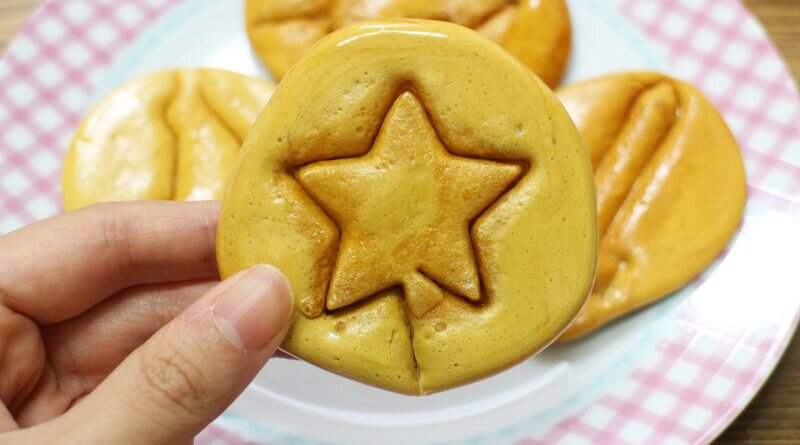History of a Dalgona
No, we are not one year late to the Dalgona coffee trend that took the world by storm. Instead, we are here to tell the story of this sweet roadside treat!
When you walk on the streets of Korea, you are likely to find (usually older) people selling this snack for ₩1,000. Usually, if you are able to eat around the design in the middle, you will be rewarded with another Dalgona free of charge. It's a tasty snack and fun game in one!
Why is it called Dalgona?
Derived from the phrase "설탕보다 달구나" (seoltang boda dalguna = sweeter than sugar), the Dalgona gets its name from its taste. Dalgona literally means sweet (dal means sweet and guna in Korean is a grammar point that show's a speaker's surprise).
The Dalgona is eaten all across Korea and as such, may sometimes go by other names like Bbob-gi (to pluck), Jjok-ja (ladle), and Ddong-gwa-ja (poop cracker). While the name Bbob-gi was likely derived from how Dalgona is eaten, the name Jjok-ja was likely coined from the method of making the Dalgona as sugar is usually heated in a steel ladle over an open flame. The name Ddong-gwa-ja stems from its yellow-brown colouring, and also the fact that it is junk food (since... it's just sugar and baking soda).
Sugar and Dalgona
Although there are no official records as to the origins of the Dalgona, it is estimated to have been created in the 1960s.
During the height of the Korean war in the early 1950s, sugar had to be imported and was thus scarce and expensive. It was only in November 1953 that sugar was produced locally and thus became more affordable. Sugar then was consumed as a tonic for people who felt unwell.
The Cuban Missile Crisis in 1962 affected the Korea's import of sugarcane and thus production of sugar in the country. The price of sugar ballooned from around ₩4/100g in 1962 to ₩40/100g in 1963; a ten-fold increase.
Naturally, this lead to a panic-buying of sugar, thinking that stocking up on this condiment would be a good investment. Sugar then became a luxury to be gifted during special occasions. Now, most households had access to sugar and sugar soon became common place in the average Korean home.
By tracking these little nuggets of history, many estimate the Dalgona to have been invented in the late 1960s, making it a nostalgic childhood snack for those who grew up in the 60s and 70s.
Making a Dalgona
Consisting of only two ingredients, the Dalgona can be made easily in your very own kitchens. You just need a steel ladle, a chopstick, a metal plate, parchment paper, sugar, and baking soda.
You can use cookie cutters to press designs into your Dalgona. However, it is not easy to remove the cookie cutter without destroying the rest of your Dalgona so a lot of trial and error is needed here.
This is what happens when you push the cookie cutter too deep in... I think.
Steps:
Hold a steel ladle over open flame and fill it half-full with sugar.
Stir with a chopstick until the sugar melts.
Using the same chopstick, dip it into baking soda and stir it into the melted sugar.
The colour should change from a translucent white to opaque yellow-brown.
If there is little change, dip your chopstick into baking soda again and stir.When the mix starts rising, pour it out onto a sheet of parchment paper. If the mixture is too viscous, flatten it with a metal plate.
Press the cookie cutter into the mix. Take care not to press it all the way through.
Once it hardens, remove the cookie cutter and peel your Dalgona off the parchment paper.
While both white and brown sugar can be used, making a Dalgona with white sugar will give you a more authentic taste of a Dalgona.
Brown sugar takes longer to melt and a Dalgona made from brown sugar will carry a strong fragrance of the brown sugar.
소다빵 or what we call Dalgona Bread
While most of us know of the flat Dalgona, there is another way of making the Dalgona as well. In Korean, it's called 소다빵 (soda bread) which is derived from the baking soda added to make the sugar expand.
The method is same as that of making a Dalgona, except you add a lot more baking soda.
The result is a fluffy sweet cookie that goes well with coffee and ice cream.
Now that you know more about the Dalgona, why not try making one too? Just remember not to leave it in the ladle for too long, or your Dalgona will be inseparable from it — experienced words from someone who did exactly that.
Image credit: Gwangju News
Source: https://brunch.co.kr/@highfree/4











